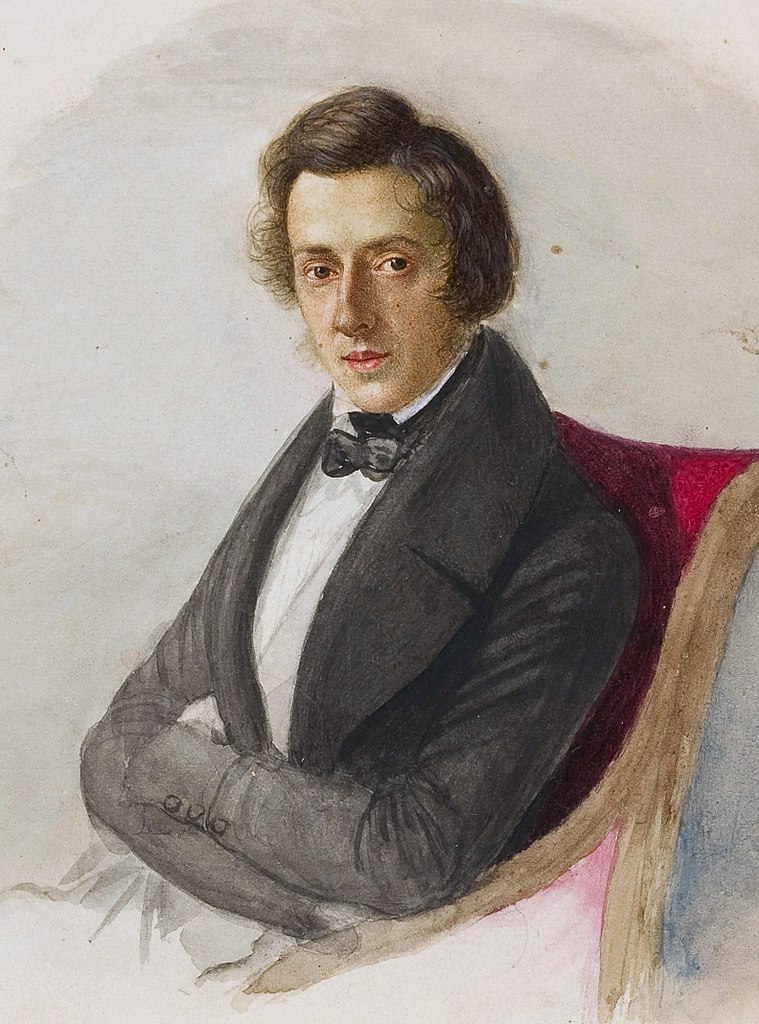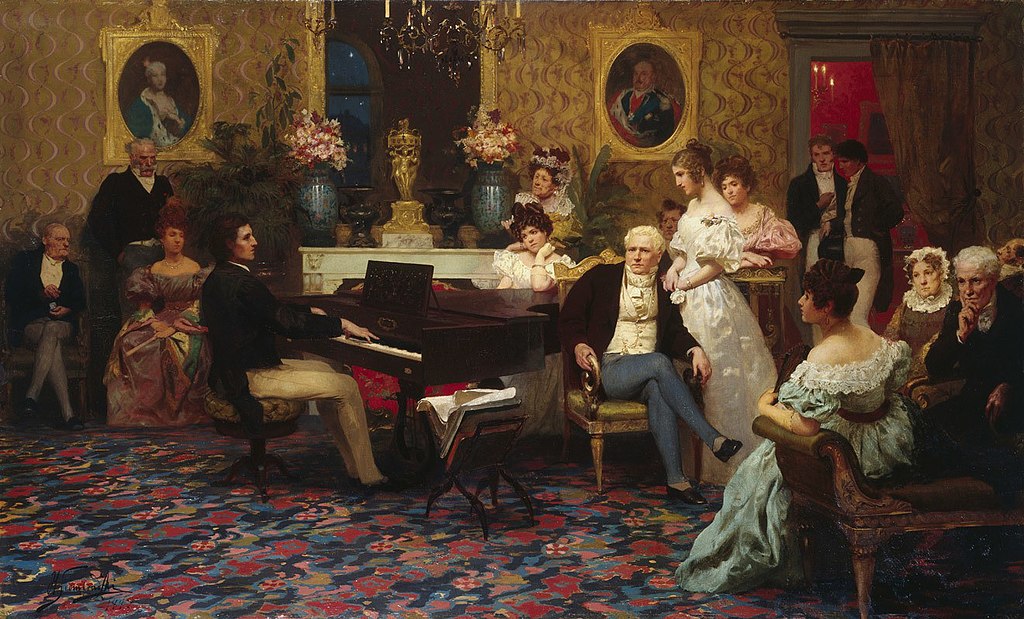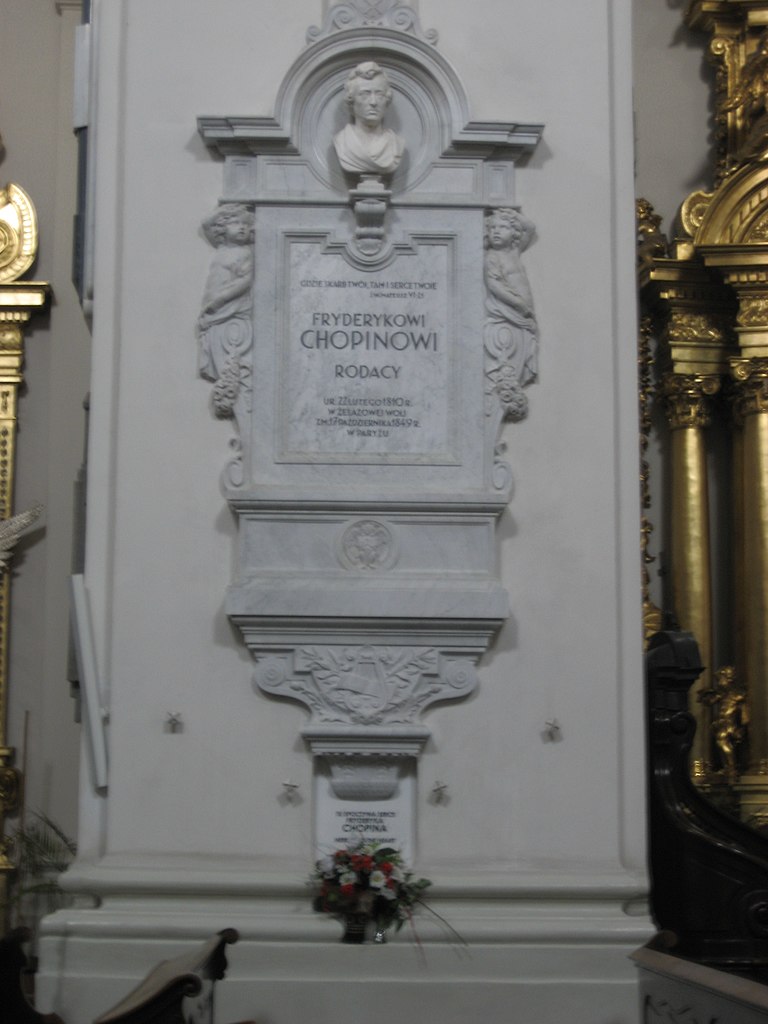
Frédéric Chopin
Chopin has a commanding presence among lovers of music—particularly pianists. Furthermore, it seems doubtful that anyone could make a career as a pianist without mastering a significant amount of Chopin’s work.
Chopin’s mastery of the piano was apparent from the beginning. In a time when piano music was pouring from the pens of composers everywhere, one of the most prominent musicians of the time, François-Joseph Fétis, found in the 22-year-old Chopin’s compositions, “if not the complete renewal of piano music, at least a part of that which we have so long sought in vain, namely an abundance of original ideas of a kind to be found nowhere else.”
Robert Schumann famously published the oft-quoted words “Hats off, gentlemen, a genius!” in a review of the young Chopin’s second published work (Opus 2), a set of piano variations on Mozart’s La ci darem la mano. All told, Chopin’s promise was great.

Personal Data
Dates: 1810-1849
Born: Żelazowa Wola, Poland
Residence: Paris
Chopin was devoted to a still new form of music we call “character pieces,” relatively short works that express a mood or other non-musical idea. Character pieces took many forms and bore a variety of names like nocturnes (pensive, atmospheric pieces with delicate melodies) and barcarolles (pieces evocative of the undulating of a boat). He also became a master at taking Polish national dance rhythms and turning them into virtuosic works for listening, including the mazurka or Polonaise. And he followed an established practice by writing a series of preludes, but from his pen they “preluded” or introduced nothing, but rather established 24 vivid moods that moved through each of the major and minor keys.
Although he composed sonatas and concertos that followed traditional classical forms, Chopin is renown far more for his virtuosic etudes, fiery scherzos, and ballades that imitated the Romantic era’s devotion to narrative poetry. Notably, he wrote no operas—the path to success for so many—and no symphonies. He also wrote just few chamber works.
The piano was Chopin’s world: His notable skills as a pianist earned him an instant reputation as a performer and made him the most sought-after teacher. Yet he was uncomfortable in both roles. And while the fledgling public concert attracted most of the era’s virtuosi, Chopin’s works (and temperament) were far better suited to the intimate Parisian salons. Fortunately, such gatherings in private aristocratic homes fueled much of the true artistic development of the era of early Romanticism. Chopin traveled easily in these circles of high society along with the major painters and writers of the time.
Chopin was a melodist—one of the rare gifted composers who can craft melodies that are instantly memorable and unforgettable. His melodies flow in long lines, frequently ornamented and with flexible rhythms (rubato) to accommodate their intricacies. His harmonies were bold and foreshadowed the extreme chromaticism of the next generation. He instinctively built sections of his compositions into powerful architectural shapes in sound.

Timeline
Chopin's Heart in Poland
Chopin lived in a spiritual divide between his beloved Polish heritage and the cosmopolitan clamor of Paris where he spent his adult life. Born in a manor house at the family estate in Żelazowa Wola (“Iron Will”) 33 miles outside of Warsaw, baby Frédéric was taken to Warsaw where his family would make its new home. Excellent musical training existed in Warsaw, so Chopin had abundant opportunities to develop as a pianist, organist, and composer.
Yet Paris offered everything to artists of the 19th century: the best opera and theater, wealthy aristocrats able to offer commissions and financial support, high fashion, and a whirlwind of brilliant minds eager to remake the world. That Chopin would choose to live among them is not surprising. Paris offered something else the composer needed: political refuge from the simmering dangers of Warsaw where passionate Poles like Chopin pushed the edges of authority. Despite her own political turmoil after the Napoleonic Wars, Paris still offered safety to those fleeing similar turmoil in many European cities, much of which exploded into street rioting and broad arrests in the monumental years of 1830 and 1848.
It is rewarding to experience Chopin’s Polish nature in his music. His compositions express precious elements of Polish culture: the brilliant polonaises (a solemn court processional still taught to children today), mazurkas (a triple-meter dance characteristic from a vibrant area called Mazur), and Polish dance rhythms that abound in his larger pieces, including a boisterous dance called the krakowiak stemming from Poland’s cultural heartland, Krakow.
You can rightly say that Chopin’s heart never left Poland, since he dictated that his actual heart be taken from his body before its burial in Paris and smuggled back to Warsaw. Today it rests like a holy relic in the Holy Cross church (Bazilika Świętego Krzyża), an impressive basilica along the ceremonial route to Warsaw’s royal palace.

(You must be logged into the Circle of Scholars to view the rest of this page.)
